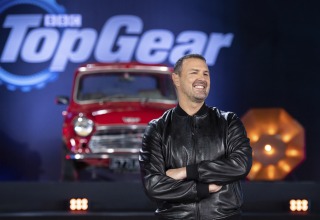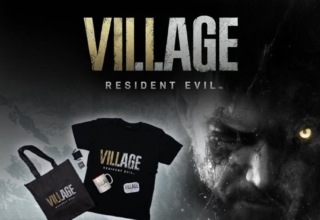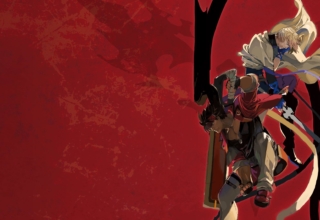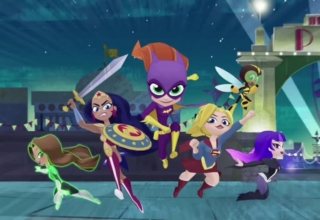Kowalski is a speed-popping racing man with a car to deliver in record time. Between him and his destination sits the American Establishment and all its spirit-squashing rules. With a Dodge Challenger as a metaphor and the open road as a battleground, the very meaning of existence will be debated. Well, that or this is just a damn cool road movie. With films from the Seventies it can be hard to tell…

Vanishing Point – whether by design or accident – is two movies. On the surface it plays as a chase film, where a lone driver outwits and outrides his pursuers. Underneath it’s an examination of America at the start of the Seventies, mulling in the aftermath of the revolutionary Sixties. But from there things get a little strange, even mystical. Especially when you watch it a second time. To this day not even the cast and crew have given satisfactory explanations of what the audience is supposed to think. That may be because they didn’t really think it through themselves. This has given the film a reputation for being a deeply philosophical piece, where everyone will have a different opinion on what it’s about. Like Donnie Darko, but with muscle cars and mutton chops.

Yet even if you never take it to those existential heights, Vanishing Point is a very satisfying petrolhead experience. Its centrepiece is the Dodge Challenger taking on scores of police vehicles, with Kowalski tearing across the freeway, ripping up dirt roads and even taking random jaunts into the desert. Cars crash and roll – all while a growing audience of America’s free spirits cheer him on. In particular a blind disc jockey becomes his unofficial cheerleader. Jeremy Clarkson considers it the best car movie made – certainly a hard point to argue (though this column still prefers Gone In 60 Seconds).

Vanishing Point wobbled at the box office, but became a cult classic and inspiration for Steven Spielberg’s debut feature Duel. You can certainly declare that they don’t make films like this any more. Even the 1997 TV remake of Vanishing Point was heavy with dragging dialogue and shallow character motivations. The original avoids these where it can and gleans over them when it can’t. Vanishing Point comes from a time when movies truly were still an experience – a larger than life metaphor that doesn’t need to explain itself. All it wants is that you strap in for the ride.
Cinophile is a weekly feature showcasing films that are strange, brilliant, bizarre and explains why we love the movies.
Last Updated: November 18, 2013




















RinceandRepeat
November 18, 2013 at 16:32
Can you believe I haven’t seen this!
James Francis
November 18, 2013 at 19:25
Then my job is done – go find it!
Justin Hess
November 19, 2013 at 10:13
I haven’t seen this but I absolutely adore American 70s cinema. There’s something about the feel of it that just feels so right
James Francis
November 19, 2013 at 15:23
This resonates a lot of the era, even though it’s an early entry. It must be that wide shot, washed-out colours style…
Justin Hess
November 19, 2013 at 15:29
Actually, you make a really good point there with the wide-shot aspect. Films (mainstream, I mean) today really seem to be terrified of an empty space in the frame. Everything has to be stuffed into the frame leaving little empty space.
The one thing that often stands out to me about 70s cinema is how much they leave the frame empty. It might be showing you nothing in the frame, but sometimes nothing is as important as whatever element is there
James Francis
November 19, 2013 at 15:51
You nailed it: even George Lucas liked using wide, empty shots in Star Wars. Maybe they were all copying Sergio Leone’s stuff from the Sixties…
Another thing I noticed: while prepping for this I also watched the remake (which was overfed and soulless). It used handheld shots a lot. The original is practically all locked shots. This made me realise: many of today’s film makers use handheld because they are too lazy/inept to put intensity in a steady shot though good framing. Handheld is great, but it allows amateurs to cut corners (not unlike music and autotune).
Justin Hess
November 19, 2013 at 16:19
Handheld can be good when used properly. Spielberg with Saving Private Ryan and Greengrass with the Bourne films are two examples, because they know what they’re framing and what they’re putting in a shot.
They want to show you something while people who use it cack-handedly have no clue what they’re putting in the frame, they just think that handheld gives it energy and a sense of chaos and something happening.
Alot of people shit all over Spielberg but the guy is a master of knowing what he wants to show you and how to make that effective.
I honestly can’t remember when last I saw a shot where a film showed the frame virtually empty for the sake of drama.
Actually, Pacific Rim with the wide shot of the two people on the beach before the Mecha crashes down.
But for the most part, those shots are far too rare.
Kervyn Cloete
November 19, 2013 at 16:37
The Coens did it in both No Country For Old Men and True Grit to great effect.
You’re both right, the steady wide shot is grievously underused in modern Hollywood cinema. There are still some European filmmakers that aren’t afraid of allowing the canvas to speak though.
Justin Hess
November 19, 2013 at 16:42
Actually, now I think of it, Brad Bird with MI4 really wasn’t afraid of the wide empty frame. And funny you mentioned the Coens because Roger Deakins used some beautiful framing in Skyfall. That shot with Javier Bardem’s first entrance for example.
Maybe I’m being to harsh though.
The lack of long wide shots might be as much down to a low budget as anything else. Those shots can be expensive if you down’t have access to locations
Kervyn Cloete
November 19, 2013 at 16:45
It’s actually not so much money/location as it is framing and a good DP. Getting the lighting just right, or even just using using a good filter, can turn the crappiest scene into something truly arresting. Prime example: Winter’s Bone. Total dump of a location, but Debra Granik pulls off some truly haunting shots.
Or even see what Gareth Edwards did on a shoe string budget for Monsters.
Justin Hess
November 19, 2013 at 16:55
Quite right. Budget shouldn’t really enter into. It just comes down to taste and smarts and eye for it.
Not to hate on JJ again but he is a prime example of one who is terrifed of a clean space.
It kinda puts me in mind of Jim Lee versus John Cassidy.
Jim Lee stuffs his panels while Cassady is one who will often use very sparse framing. One really does dazzle the eye while the other is just a very effective storyteller.
Not cacking on one or the other, just preference
Kervyn Cloete
November 19, 2013 at 17:10
Plus 100 internets to you for the John Cassidy love! Planetary is still some of my favourite comic book art of all time.
James Francis
November 19, 2013 at 17:28
That’s true – one area the Coens excel at is choosing the right visual style for each movie. And both those films had western DNA, so it makes sense. They also enjoyed empty wide shots in Miller’s Crossing.
James Francis
November 19, 2013 at 17:27
I agree about Spielberg – though we should actually credit his DOP Janusz Kaminski
Justin Hess
November 19, 2013 at 17:41
To be fair, I think Spielberg deserves more credit than Kaminski. Not to take anything away from Kaminski, the guy is a fantastic DOP, but Spielberg makes the final choices and as much as the DP brings alot to Spielberg’s films, those elements of knowing precisely what he wants to show the audience and how he wants to do that are things Spielberg has excelled at prior to using Kaminski as his regular DP